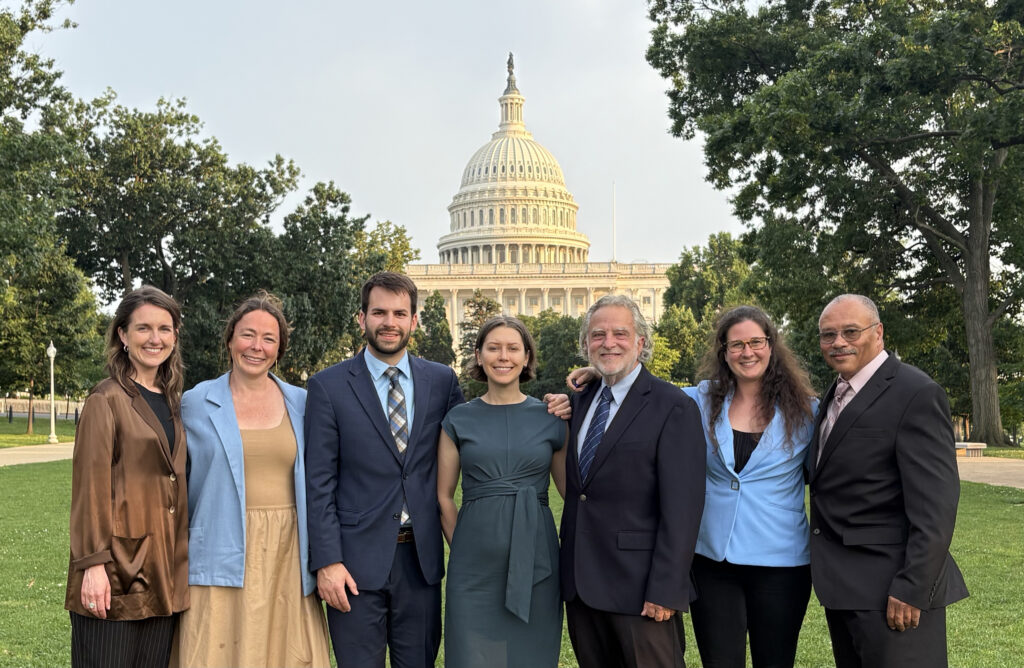Ahead of today’s historic Conference on Hunger, Nutrition, and Health, the White House released a National Strategy to improve public health outcomes and healthy food access. This occurs at a critical moment for the U.S. food system, in which inflation has reached record highs, farmers’ share of the consumer dollar has plummeted, and the country faces a public health crisis — all while food and agriculture corporations rake in record profits.
Ultimately, consolidation in our food and farming system has empowered these corporations to cheat consumers, farmers, and food system workers by price-gouging them under the cover of “supply chain disruptions” or rising operational costs. Their market power and influence also unduly influences federal policy, which has become a major driver of our current public health crisis: for example, our farm subsidies prioritize the production of cheap animal feed, sugars, fats, and other highly-processed foods instead of supporting nutrient-dense food for human consumption. As a result of this corporate price-gouging and our misdirected farm subsidies, healthy foods are inaccessible for many Americans.
The National Strategy aims to implement policy solutions for this crisis, and includes several measures Farm Action recommended in its report to the White House and in its Fair Farm Bill Policy Handbook.
- Increasing access to fruits and vegetables is a critical step in reducing diet-related diseases, and “Food is Medicine” interventions are a big winner. The National Strategy includes plans — via legislation, state-federal collaborations, and public-private partnerships — to offer medically-tailored meals and produce prescriptions to Medicare and Medicaid recipients and other vulnerable populations. The Strategy also encourages a greater focus on nutrition education among medical professionals.
- The Strategy emphasizes the importance of connecting people to nutritious foods, and seeks to accomplish this by strengthening local and regional food systems. Measures toward this include: promoting urban agriculture projects; establishing Regional Food Business Centers; using USDA’s procurement to purchase from small and underserved farmers and businesses for schools and federal prisons; and making investments to support local and regional food and farm businesses through grants and other financial assistance.
- Food sovereignty efforts, particularly among Tribal communities, have been gathering momentum, and this Strategy supports them by expanding the Food Distribution Program on Indian Reservations (FDPIR) Self-Determination project.
- This Strategy confronts the hazardous conditions faced by food system workers by generally recommending greater worker protections and collective bargaining abilities.
The White House acknowledges the role consolidation of our food system has played in contributing to the hunger and health epidemic by directing the FTC to “vigorously enforce antitrust laws” in a whole-of-government effort to expand food access for underserved communities. Hopefully, the agency will use this opportunity to address the predatory practices in retail that create and contribute to food deserts.
Unfortunately, the timing of this conference just before midterms — necessary because it was funded through a 2022 appropriations bill — has essentially eliminated any bipartisanship in the planning process. The most important part of this event will be the execution of the National Strategy, and it is Farm Action’s hope that the 118th Congress can rise above partisan battles to accomplish the powerful goals it contains. Farm Action is especially hopeful for future bipartisanship on these matters because there is so much more to accomplish beyond what the document includes. The 2023 Farm Bill is an ideal opportunity to achieve the objectives from Farm Action’s recommendations, including the following, which were not addressed by the Strategy:
- Aligning farm support subsidies with dietary guidelines. Farm subsidies are a huge driver of what is available and how much it costs: corn and soybeans are heavily subsidized, and so we have abundant animal feed, cheap sugars, and fats. If only 2% of our farm supports go to fruits and vegetables, why are we surprised that 9 out of 10 Americans do not eat enough vegetables and many cannot access or afford them? We need to prioritize Americans’ health over corporate profits and shift our farm supports to reflect our own government’s dietary recommendations.
- While Farm Action appreciates the Strategy’s general recommendation for greater worker protection, the organization urges action on the harms of agrichemicals and dangerous line speeds, which are two ways that consolidation has created hazardous working conditions.
- Farm Action calls for more research on how production methods affect the nutritional content of food.
Farm Action has remained engaged in the months-long process of informing the White House Conference on Hunger, Nutrition, and Health. In addition to its formal policy recommendations, the organization attended and co-hosted several events to guide the National Strategy. Farm Action will continue working with Congress and the White House to realign our food and farm policies so that healthy fruits, vegetables, legumes, grains, and regeneratively-raised animal proteins are accessible and affordable to all.
Media Contact: Dee Laninga, [email protected], 202-450-0094




